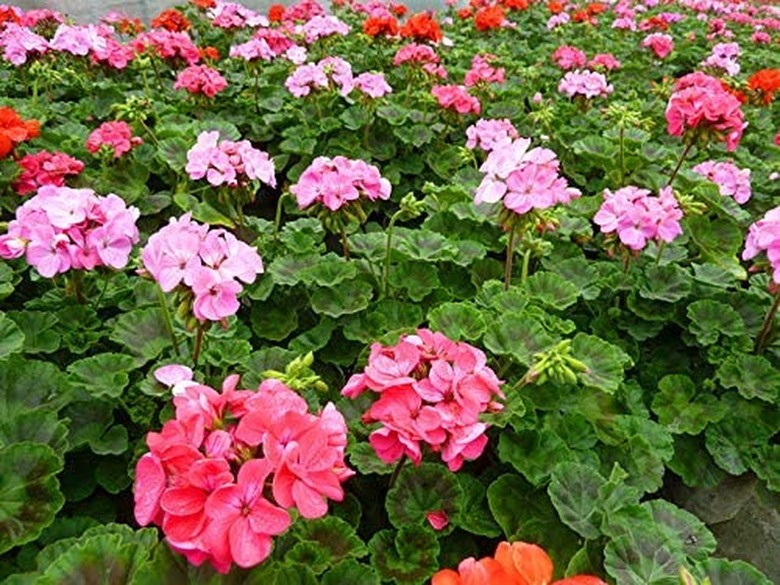How To Deadhead Geraniums
We may receive a commission on purchases made from links.
For a versatile plant that puts on a showy display of flowers, few can top the garden geranium (Pelargonium spp.). Geraniums generally grow as annuals in all parts of the United States, although some varieties are perennials in U.S. Department of Agriculture plant hardiness zones 10 through 11.
Geraniums usually bloom nonstop during the growing season, but you can boost the number of flowers while keeping the plant looking tidy by removing spent blossoms, a process called deadheading.
Deadhead Your Geraniums
Deadhead Your Geraniums
Geraniums produce their flower heads at the end of short, stiff stems. Each flower in the cluster is made up of several flowers, each with five petals. Geranium flowers generally bloom in spring and summer.
The practice of clipping off dead and fading flowers is termed "deadheading." This will keep the shrubs looking good and will make room for fresh flowers as blossoms wilt. To deadhead flowers that have started to fade and turn brown, snip off the wilted blooms with sharp shears, cutting at the base of the thin stem that supports the flower cluster.
If petals have already fallen off the plant, you'll see bare stems sticking out beyond the foliage like spikes. It's a good idea to remove these too for aesthetic reasons during the deadheading session. Clean blades between cuts with rubbing alcohol to prevent the spread of plant diseases.
Extend the Flower Season
Extend the Flower Season
Deadhead geraniums whenever you notice faded or brown blooms. If you leave flowers on a geranium until petals fall, the plant funnels energy into making seeds from the remaining flower parts. By deadheading geraniums regularly, you'll prevent seed production and extend the length of the flowering season by forcing more energy into flower production.
Once you've deadheaded the plant, keep it well watered and don't allow the soil to dry out completely. Extended periods of dryness can cause leaves to wilt, turn yellow, and drop from the plant, which can also deprive the plant of energy needed for flowers. Provide supplemental water so the plant receives about 1 inch of water weekly, including rain.
Fertilize Geraniums to Increase Blooms
Fertilize Geraniums to Increase Blooms
While deadheading is one way to clear out the debris and encourage new flowers, it's not the only way to increase the blooms. It's also important to fertilize a geranium regularly during the growing season so it puts out as many new flower buds as possible after deadheading.
In spring, when you plant new geraniums, give them about 1 pound of granular, 10-20-10 fertilizer for every 100 square feet of planted area, mixing the fertilizer into the soil well. To boost blooming throughout the season, repeat this fertilizer application every four to six weeks. Water the plants at their base to avoid disturbing the roots. Use a water-soluble 10-20-10 fertilizer diluted at a rate of 1/4 teaspoon per gallon of water. Check product label instructions for additional directions.
How to Promote Branching
How to Promote Branching
It feels sinful to pinch or snip off growing tips on young plants, but this practice helps geraniums develop bushy forms that become flush with flowers later in the season. It promotes branching, which makes the shrub more dense, as it encourages the shrub to spread as it grows.
Overwintering Geraniums Indoors
Overwintering Geraniums Indoors
As the end of the season nears, dig up and pot garden geraniums to overwinter indoors, bringing them back outdoors for transplant the following spring. Trim back the plants so each stem has a few leaves and put them in pots with garden soil. Choose only healthy, insect- and disease-free plants and keep them in a cool spot with bright light, such as a west- or south-facing window. Water the plants well when you first pot them and then keep them a bit dry during winter, watering only when soil feels dry to the touch.
